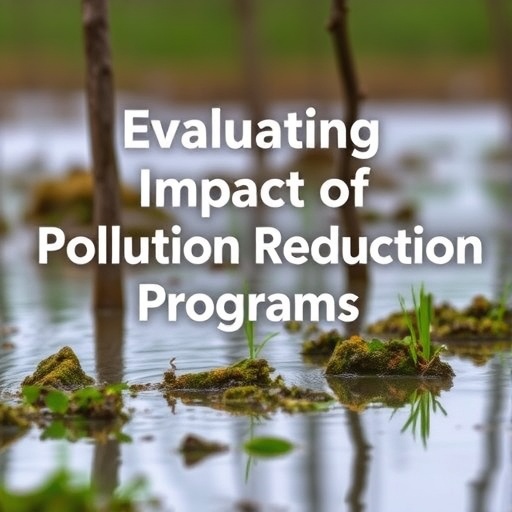In an era where environmental policies often grapple with balancing economic costs and societal benefits, recent research published in the prestigious journal Health Economics sheds illuminating light on the tangible health improvements attributable to pollution control programs. The extensive study, focusing on the US Nitrogen Oxide (NOx) Budget Trading Program, unravels a compelling narrative that extends beyond traditional environmental discourse, illustrating profound enhancements in infant health metrics, particularly among marginalized communities.
The NOx Budget Trading Program represents an innovative cap-and-trade initiative designed to curb ozone pollution by limiting nitrogen oxide emissions across multiple states. Nitrogen oxides are well-known precursors to ground-level ozone, a harmful air pollutant linked to respiratory and other systemic health issues. Despite considerable implementation costs and socio-economic debates surrounding such policies, the program’s benefits, as explicated through rigorous economic and epidemiological analyses, reveal a compelling case for such environmental regulations.
This groundbreaking research leveraged over a decade of comprehensive birth records from the United States, employing advanced econometric models to dissect the nuanced impacts of the trading program on infant health outcomes. Beyond averaging data, the study adopted stratified analyses to highlight differential impacts across socioeconomic and racial lines, thereby emphasizing health equity concerns. The findings show that the program was associated with a significant increase in birth weight, a crucial indicator of neonatal health and long-term wellbeing, with an average rise reaching up to 19.5 grams.
Perhaps more striking are the reductions in adverse birth outcomes, notably a 5.5% decrease in low birth weight incidences—a defined condition associated with heightened risks of infant mortality and chronic disease in later life stages. Moreover, the program contributed to a commendable 13% reduction in very preterm births. Preterm birth is a leading cause of neonatal morbidity and mortality, and such decreases signify substantive improvements in early-life health trajectories that may translate into lifelong benefits.
Crucially, these positive outcomes were disproportionately pronounced among Black, low-income, and single mothers—populations historically burdened with higher risks for poor birth outcomes due to intersecting socio-environmental vulnerabilities. This enhancement in health equity underscores the multidimensional benefits clean air initiatives offer, advancing both environmental and social justice agendas simultaneously.
The study’s author, Nahid Tavassoli, an Assistant Professor of Economics at Austin Peay State University, contextualizes these results within a broader economic and public health framework. By integrating environmental economics with epidemiological data, Tavassoli elucidates the potent life-saving potential embedded in air quality regulations. The research thus transcends traditional disciplinary boundaries, offering policymakers robust evidence to justify the continuation and expansion of similar programs.
This investigation also calls attention to the intricate mechanisms through which environmental toxins influence developmental origins of health and disease. Pollutants like nitrogen oxides can induce systemic inflammation, oxidative stress, and epigenetic modifications during gestation—pathways increasingly recognized as pivotal in shaping neonatal health and vulnerability. Therefore, reductions in ambient NOx emissions may directly mitigate these harmful biological processes, culminating in healthier birth outcomes.
Furthermore, the economic implications are substantial. Improved birth weights and reduced preterm births not only alleviate immediate medical costs associated with neonatal intensive care but are also predictive of reduced long-term healthcare expenditures. Healthier infants tend to have better cognitive development, reduced chronic illness incidence, and enhanced productivity in adulthood, which cumulatively elevate societal economic welfare.
The study’s findings resonate with broader environmental and public health paradigms advocating for integrative policies that jointly address pollution abatement and health disparities. By demonstrating measurable health gains tied to specific pollution control measures, the research empowers stakeholders to adopt evidence-driven decisions. Moreover, the results act as a clarion call to incorporate environmental justice considerations explicitly in policy design, ensuring vulnerable populations receive prioritized benefits.
Technically, the NOx Budget Trading Program operates by allocating emission allowances to industries, which can then be traded, creating economic incentives for emission reductions where they are most cost-effective. Such market-based mechanisms offer flexibility and encourage innovation in pollution control technologies. The demonstrated health benefits of this approach uncover a nuanced cost-benefit calculus, revealing that initial economic expenditures can be outweighed by ensuing health and societal advantages.
As climate change and environmental degradation continue to dominate global policy agendas, this study accentuates the necessity of rigorous interdisciplinary research to elucidate the complex interplay between environmental factors and human health. The integration of large-scale epidemiological data with economic modeling, as exemplified by Tavassoli’s work, sets a benchmark for future investigations seeking to quantify the real-world impacts of policy interventions.
In conclusion, the evidence presented in this research furnishes a robust, empirical foundation underscoring the critical value of environmental regulation in fostering infant health, particularly within underserved communities. It challenges policymakers to transcend traditional economic arguments centered solely on cost, advocating for a holistic view that recognizes pollution control as a vital determinant of public health and social equity. This multifaceted understanding promises to invigorate future environmental and health policy strategies, making a profound difference in population health outcomes for generations to come.
Subject of Research:
Impact of the Nitrogen Oxide Budget Trading Program on infant health outcomes in the United States.
Article Title:
New Beginnings: The NOx Budget Trading Program and Infant Health
News Publication Date:
5-Nov-2025
Web References:
http://dx.doi.org/10.1002/hec.70047
https://onlinelibrary.wiley.com/journal/10991050
References:
Tavassoli, N. (2025). New Beginnings: The NOx Budget Trading Program and Infant Health. Health Economics. DOI: 10.1002/hec.70047
Keywords:
Pollution, Pregnancy, Infants, Environmental economics, Ozone, Birth rates, Health equity, Health disparity, Health care




